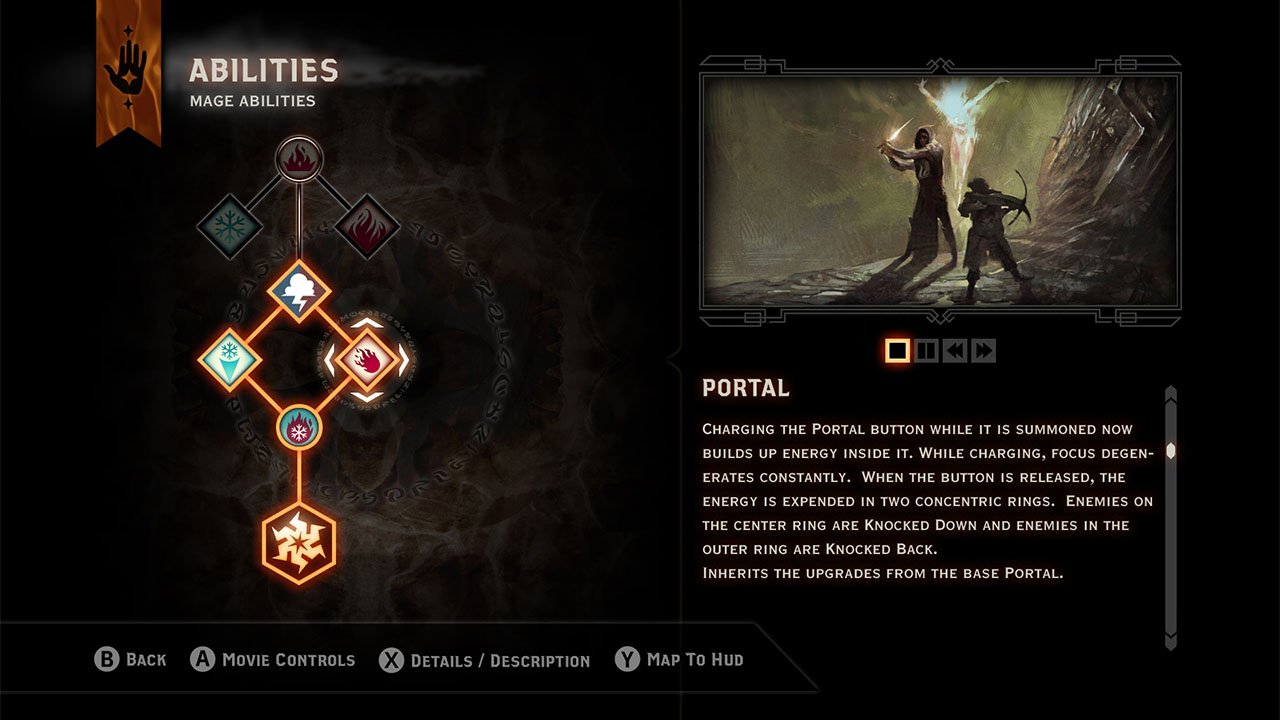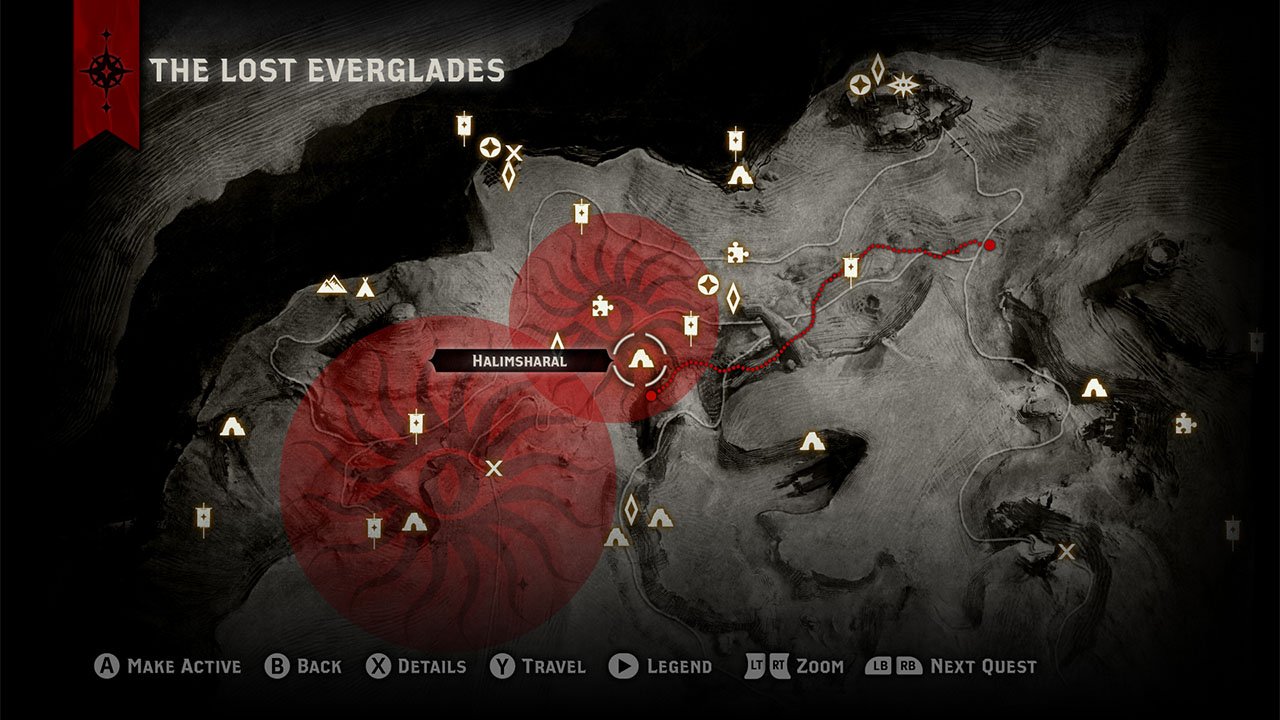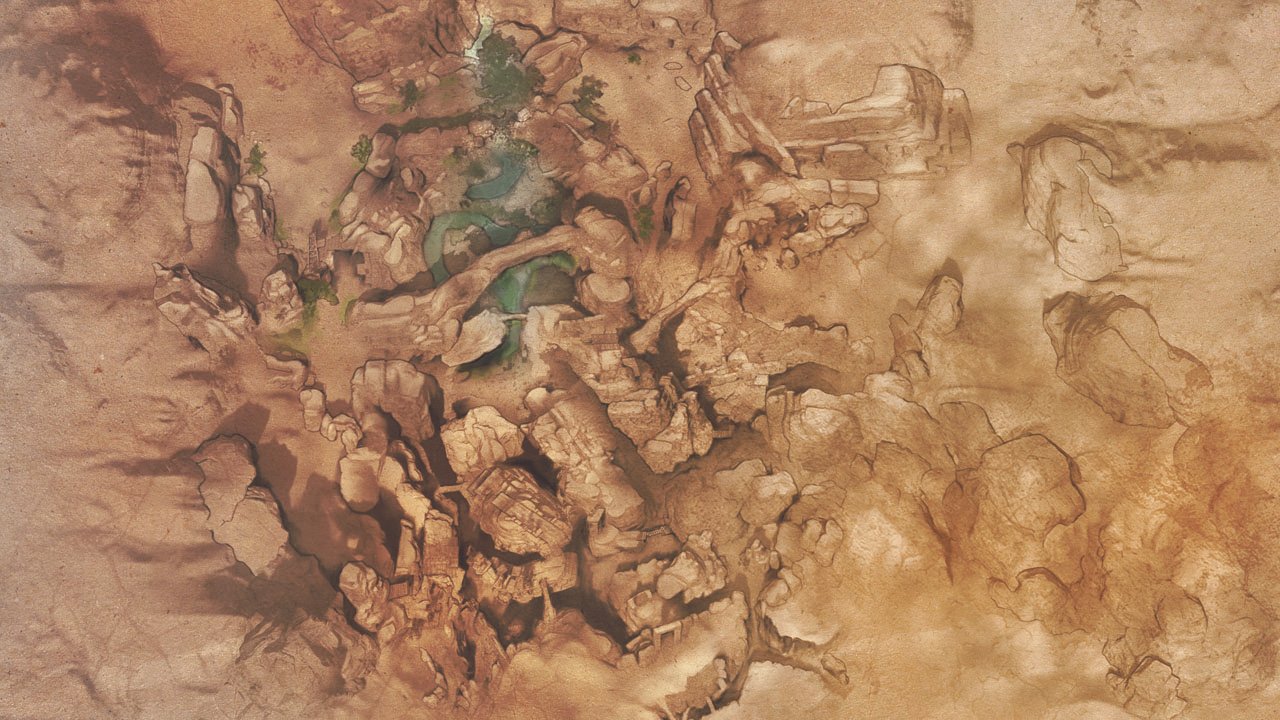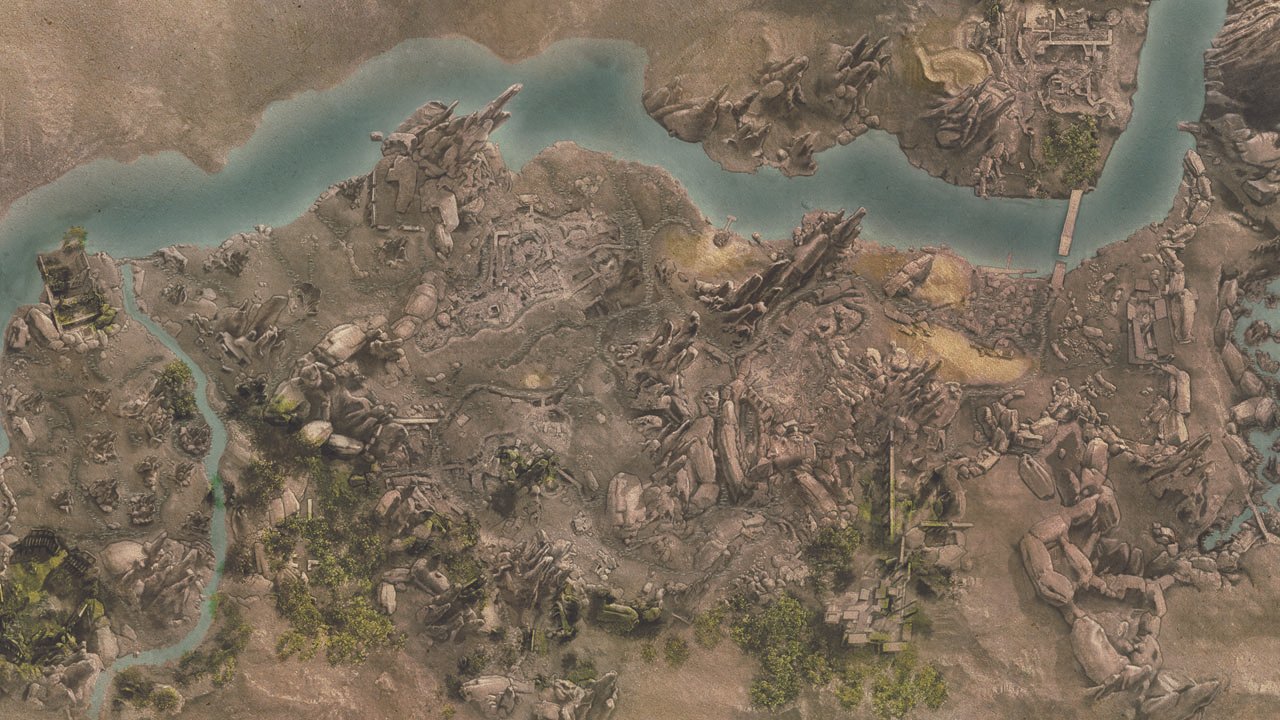Dragon Age Inquisition
Role: Lead UI/UX Artist
Studio: BioWare
Platform: PC / Xbox One / PS4
Release Year: 2014
Project Overview
With Dragon Age: Inquisition, the franchise transitioned into the next generation—both technically and artistically. This entry aimed to reimagine the UI to align with a more cinematic, oppressive, and politically charged narrative. As Lead UI/UX Artist, my role was to break from the previous game’s fantasy aesthetic and create an interface that felt authoritative, modern, and integrated with the world of the Inquisition.
Design Goals
Oppressive Aesthetic: Reinforce the tone of the Inquisition through stark, almost institutional interface design.
Minimalism with Purpose: Strip away unnecessary decoration to allow critical information to stand on its own.
Immersive Overlays: Replace traditional “menu” screens with UI layers over live 3D scenes to maintain player immersion.
Modernization: Update the series’ visual identity to reflect the game’s larger world, next-gen scale, and political tone.
New Visual Language for a New Inquisition
Challenge:
Move away from high fantasy and parchment-heavy UIs to a more austere, commanding design that fit the Inquisition’s institutional power and darker themes.
Solution:
Introduced a clean, angular visual language—metallic grays, parchment white, and blood accents—evoking control, order, and a touch of threat.
Developed sharp, geometric iconography replacing older fantasy glyphs.
Used military-influenced typography and sparse color palettes to reinforce the weight of player decisions and the Inquisition’s authority.
Subtle animations (fades, slides) were deliberately slow and deliberate—reflecting the deliberate pace of power.
UI Overlays on 3D Scenes
Challenge:
Keep players immersed in the game world even while navigating menus.
Solution:
Built UI directly on top of 3D world scenes, particularly for inventory management, map interactions, and crafting.
Allowed camera control to remain active in certain menus, giving players a sense of continuity and presence.
Used diegetic light sources from the environment to subtly light overlay UI elements, enhancing cohesion between UI and game world.
Example: the War Table UI was placed in a physical in-game space, with your advisors and the map laid out in front of you—a seamless blend of gameplay, narrative, and UI.
Process & Tools
Prototyped UI flows and layouts using Photoshop and Flash, then collaborated closely with engineers to implement final assets using Frostbite’s proprietary UI editor, which required custom scripting and frequent iteration.
Worked with narrative, cinematic, and systems teams to ensure that UI transitions, overlays, and functionality aligned with moment-to-moment gameplay.
Conducted accessibility and contrast testing to ensure minimalist UI remained legible across platforms and lighting conditions.
Partnered with FX and camera teams to ensure UI layers behaved properly over dynamic 3D environments.
Outcome
The new UI design became an integral part of Inquisition’s worldbuilding. It reflected the game’s scale, its political tension, and its darker reimagining of power and leadership. Reviewers and players alike noted the "in-world" UI presentation and minimalist clarity as key enhancements to immersion. The work set a new tone for fantasy interfaces—more HBO drama than Tolkien fairy tale.




























